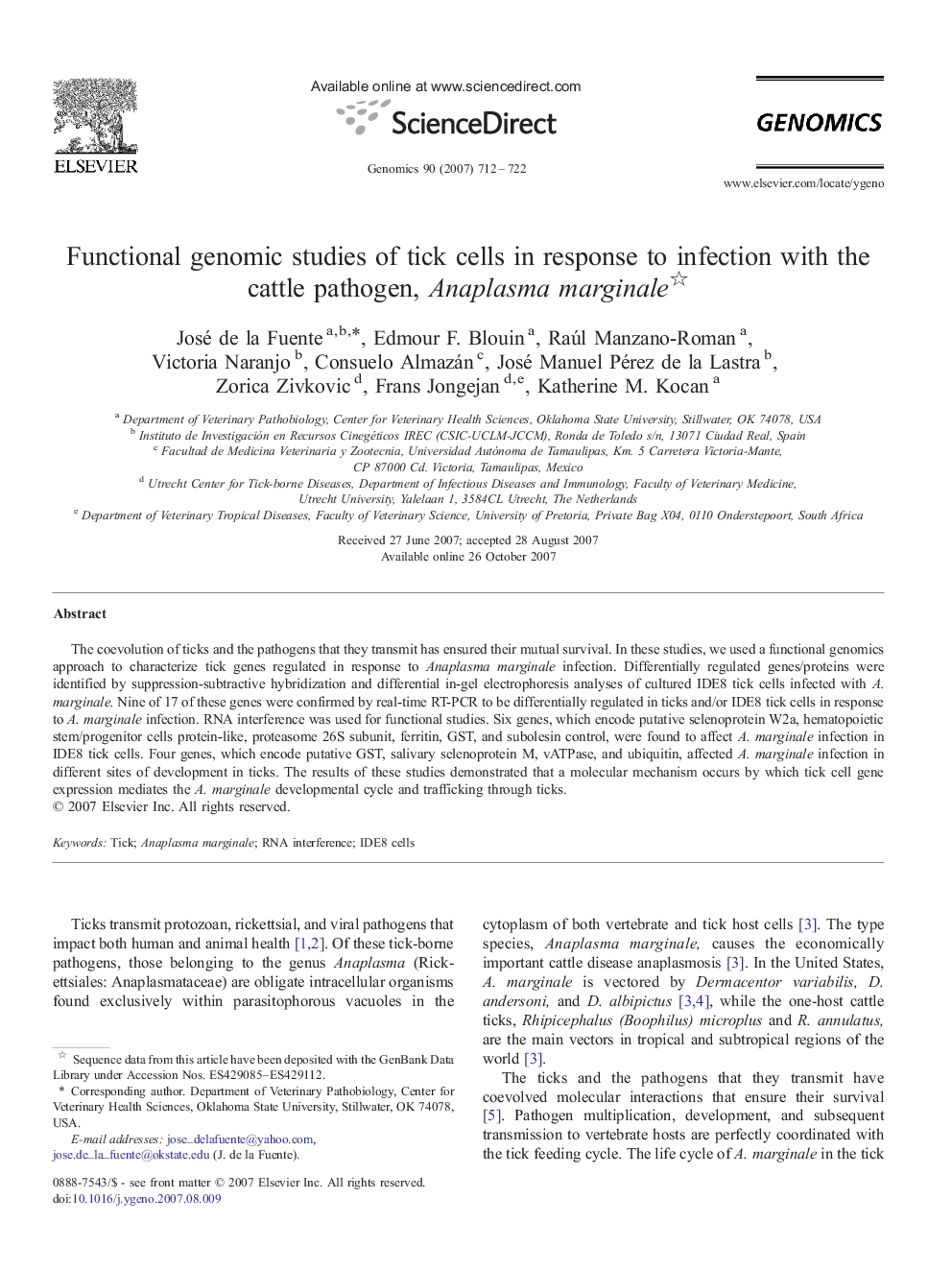| Article ID | Journal | Published Year | Pages | File Type |
|---|---|---|---|---|
| 2821694 | Genomics | 2007 | 11 Pages |
The coevolution of ticks and the pathogens that they transmit has ensured their mutual survival. In these studies, we used a functional genomics approach to characterize tick genes regulated in response to Anaplasma marginale infection. Differentially regulated genes/proteins were identified by suppression-subtractive hybridization and differential in-gel electrophoresis analyses of cultured IDE8 tick cells infected with A. marginale. Nine of 17 of these genes were confirmed by real-time RT-PCR to be differentially regulated in ticks and/or IDE8 tick cells in response to A. marginale infection. RNA interference was used for functional studies. Six genes, which encode putative selenoprotein W2a, hematopoietic stem/progenitor cells protein-like, proteasome 26S subunit, ferritin, GST, and subolesin control, were found to affect A. marginale infection in IDE8 tick cells. Four genes, which encode putative GST, salivary selenoprotein M, vATPase, and ubiquitin, affected A. marginale infection in different sites of development in ticks. The results of these studies demonstrated that a molecular mechanism occurs by which tick cell gene expression mediates the A. marginale developmental cycle and trafficking through ticks.
